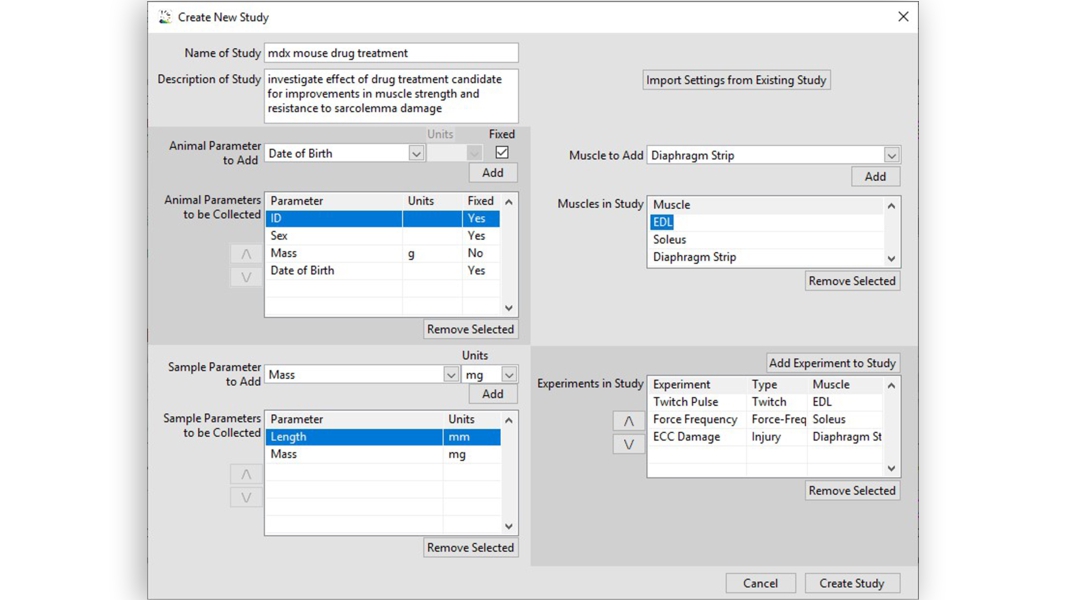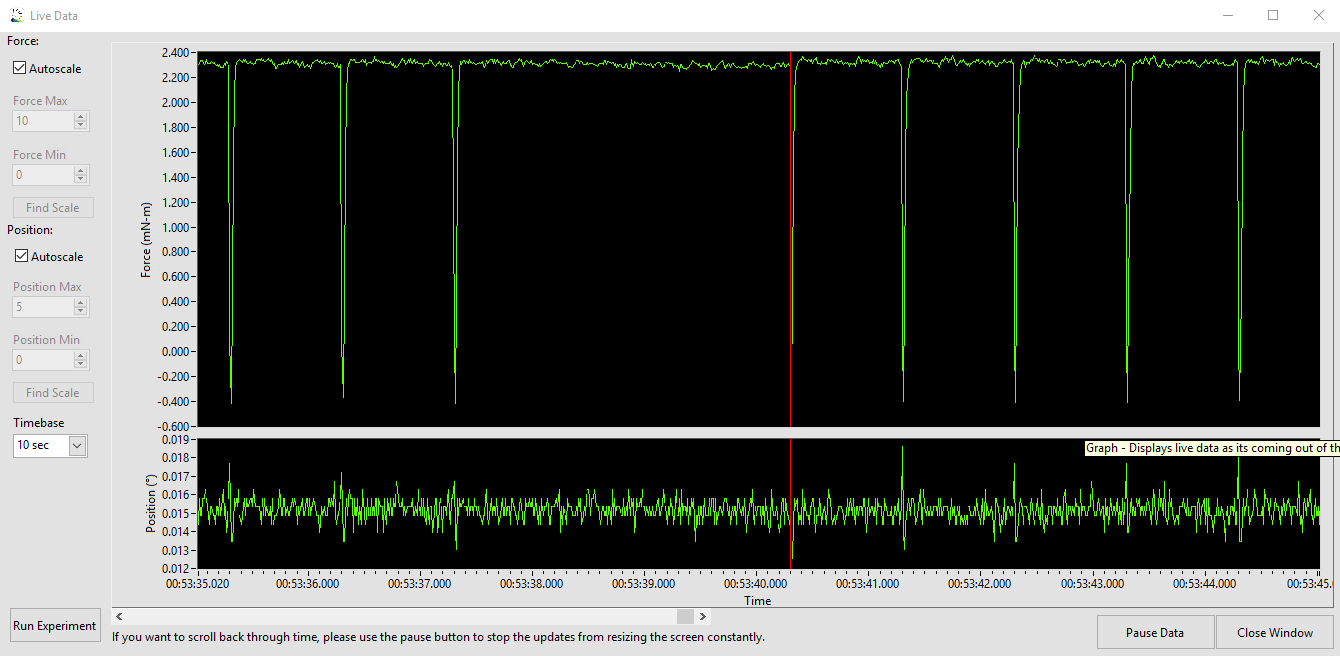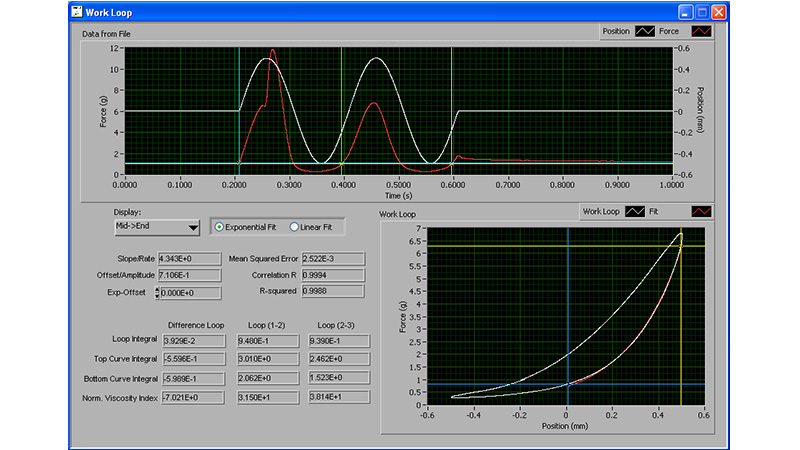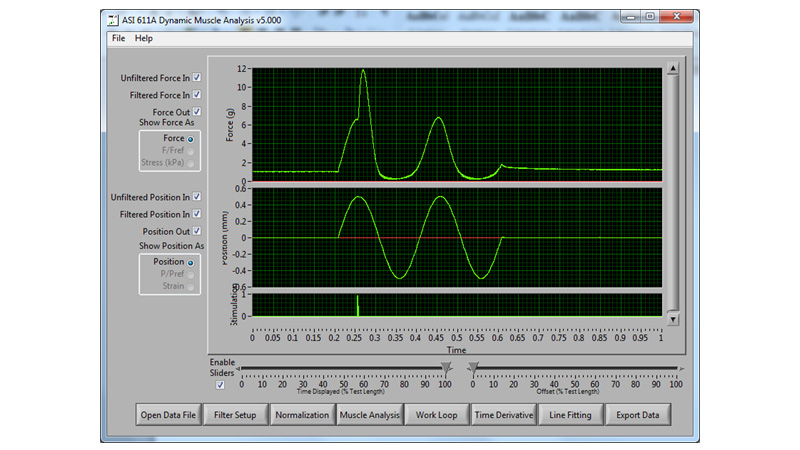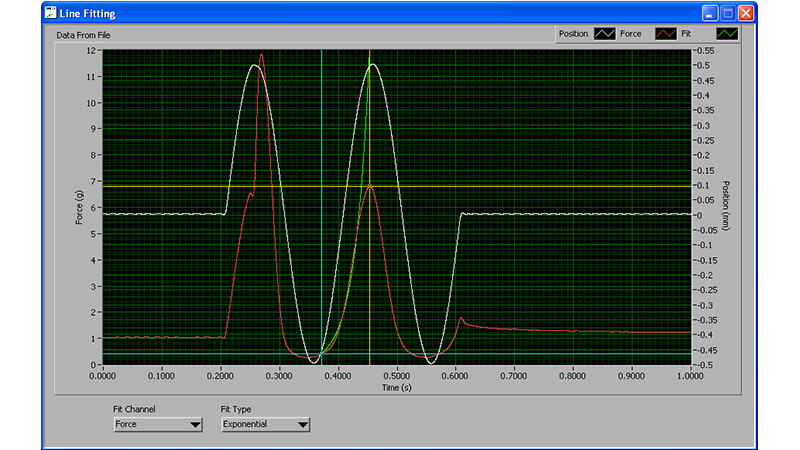615A: Dynamic Muscle Control and Analysis Software
The 615A Dynamic Muscle Control and High-Throughput Analysis software suite (DMC/DMA-HT) combines our three LabVIEW stand-alone executable programs into one powerful and complete software package. Researchers now have an integrated software suite to handle the entire data collection, control and analysis functions of muscle contractile experiments.
The 610A Dynamic Muscle Control (DMC) LabBook software was designed to enable physiology researchers to study the dynamic mechanical characteristics of muscle tissue. The system is capable of controlling and taking data from all of our 300C series muscle levers, our 400A series of force transducers and our 700A series of stimulators.
DMC LabBook has an intuitive and easy-to-use graphical user interface that guides the user through the step-by-step process of a typical muscle mechanics experiment. Experimental data collection is highly streamlined, with prompts to enter pertinent parameters about the animal, sample and experimental protocol before data is collected, eliminating the need for handwritten lab notes. This information is easily searchable and simplifies the process of organizing data records. DMC LabBook includes a live data monitor of the current length and force to visualize real-time data output without the need to load data files.
The 611A Dynamic Muscle Analysis (DMA) software provides analysis of data recorded using the DMC program. It features an easy-to-use graphical user interface and powerful analysis functions that calculates muscle, work loop, and time-derivative data. All data can be plotted and analyzed within the program’s many windows. DMA can also be used to analyze 600A Real-Time Muscle Data Acquisition and Analysis Software data sets.
The 612A Dynamic Muscle Analysis High Throughput software (DMA-HT) is a plug-in module for DMA that automates the analysis of large data sets such as those collected when performing force-frequency, force-time, position-time or fatigue analysis experiments.
The High-throughput module automatically places cursors in your data files, calculates muscle analysis data for a list of files very quickly, then displays the results in a tabular format. The results are easily exported to Excel. Each file’s cursors can be manually adjusted afterwards, or the user can optionally disable automatic cursor placement, opting to manually set a timestamp that applies for all data files in the experiment.
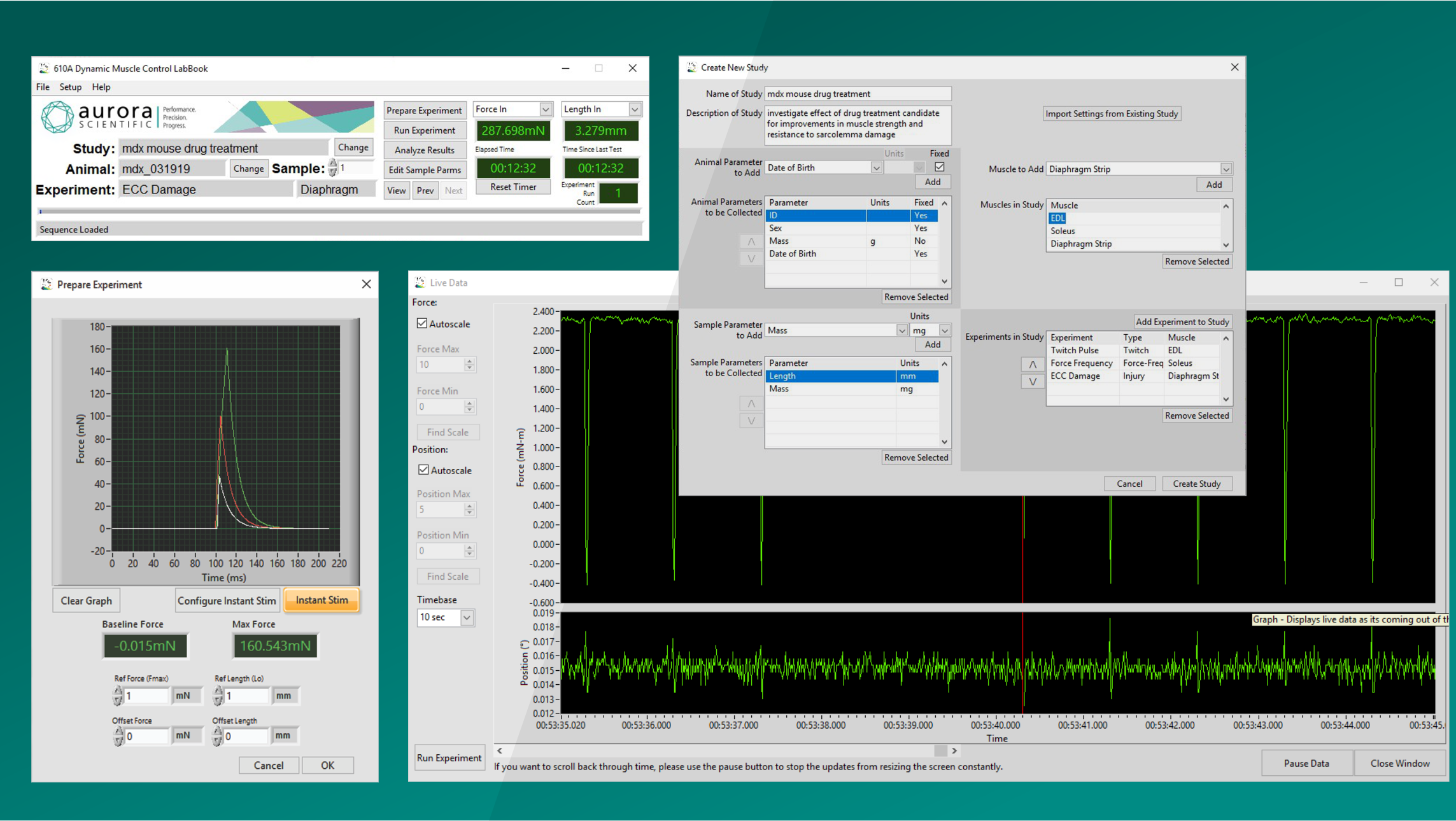
Components
610A: Dynamic Muscle Control
611A: Dynamic Muscle Analysis
612A: Dynamic Muscle Analysis, High-throughput
Parts & Accessories
615B: DMC/DMA-HT Suite 2nd Copy
615C: DMC/DMA-HT Suite Upgrade
Select References
- Altamirano, Francisco et al. “Whole body periodic acceleration is an effective therapy to ameliorate muscular dystrophy in mdx mice.” PLoS ONE (2014) DOI: 10.1371/journal.pone.0106590
- Brooks et al. “Voluntary wheel running increases satellite cell abundance and improves recovery from disuse in gastrocnemius muscles from mice” The Journal of Applied Physiology (2018) DOI: 10.1152/japplphysiol.00451.2017
- Hakim, Chady H., Robert W. Grange and Dongsheng Duan “The passive mechanical properties of the extensor digitorum longus muscle are compromised in 2- to 20-mo-old mdx mice.” The Journal of Applied Physiology (2011) DOI: 10.1152/japplphysiol.01425.2010
- Charles et al. “The impacts of muscle-specific force-velocity properties on predictions of mouse muscle function during locomotion” Frontiers in Bioengineering and Biotechnology (2024) DOI: 10.3389/fbioe.2024.1436004
- vanLieshout et al. “The CARM1 transcriptome and arginine methylproteome mediate skeletal muscle integrative biology” Molecular Metabolism (2022) DOI: 10.1016/j.molmet.2022.101555
- Ryan MJ, Jackson JR, Hao Y, Williamson CL, Dabkowski ER, Hollander JM, Alway SE. “Suppression of oxidative stress by resveratrol after isometric contractions in gastrocnemius muscles of aged mice.” The Journals of Gerontology Series A: Biological Sciences and Medical Sciences (2010) DOI: 10.1093/gerona/glq080
- Adams et al. “Small-molecule-mediated chemical knock-down of MuRF1/MuRF2 and attenuation of diaphragm dysfunction in chronic heart failure” Journal of Cachexia, Sarcopenia and Muscle (2019) DOI: 10.1002/jcsm.12448
- Adams et al. “Small-molecule-mediated chemical knock-down of MuRF1/MuRF2 and attenuation of diaphragm dysfunction in chronic heart failure” Journal of Cachexia, Sarcopenia and Muscle (2019) DOI: 10.1002/jcsm.12448
- Pinniger, Gavin J. et al. “Skeletal muscle weakness caused by carrageenan-induced inflammation.” Muscle & Nerve (2012) DOI: 10.1002/mus.23318
- Locke et al. “Skeletal Muscle Heat Shock Protein Content and the Repeated Bout Effect” International Journal of Molecular Sciences (2024) DOI: 10.3390/ijms25074017
Related Products
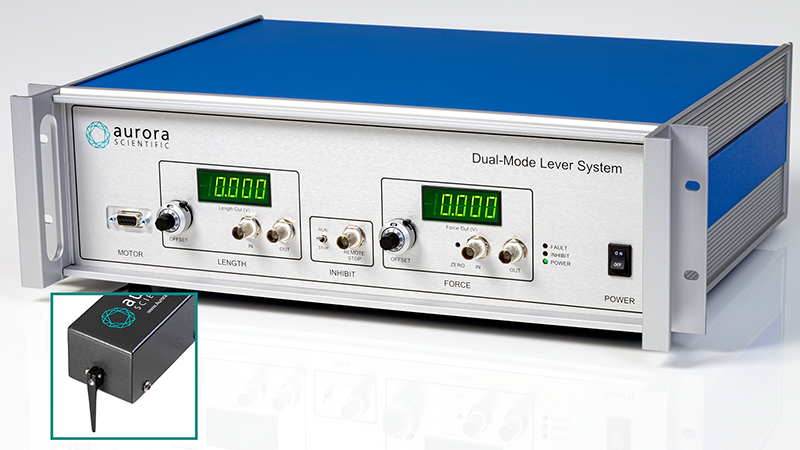
300E: Dual-Mode Muscle Levers
Seamless, flexible control of force and length, with the unique ability to measure one or both in a single and convenient lever system.
Learn More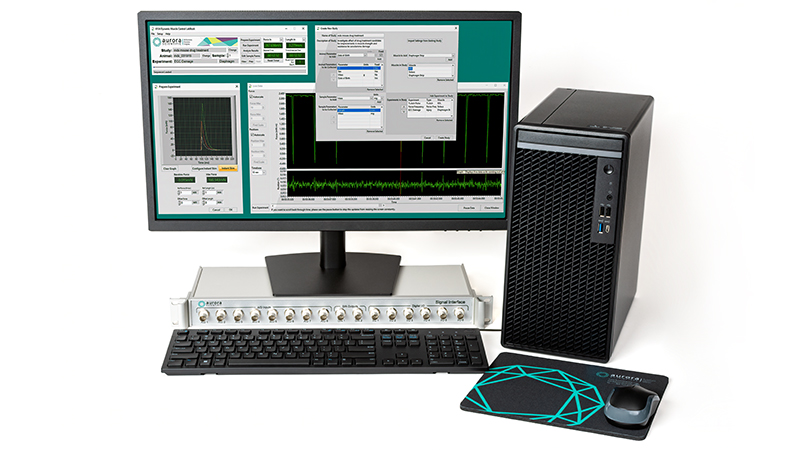
605A: Dynamic Muscle Data Acquisition and Analysis System
Precise, custom software designed for real-time data acquisition, instrument control and data analysis with unique, integrative features. Includes force and SL control capability
Learn More
701C: Electrical Stimulator
Our high-powered, bi-phase stimulator designed for muscle researchers conducting the most demanding field stimulation protocols.
Learn More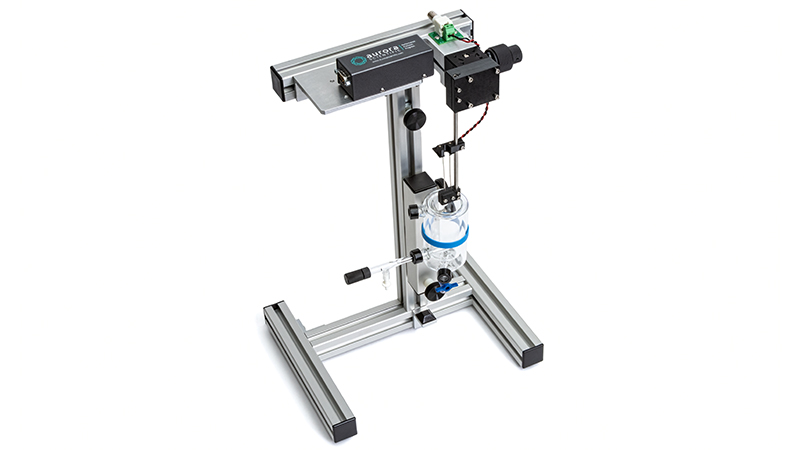
800C: in-vitro Muscle Apparatus
Flexible design makes these systems the ideal choice for measuring muscle properties of intact muscle tissue in mice and rats
Learn More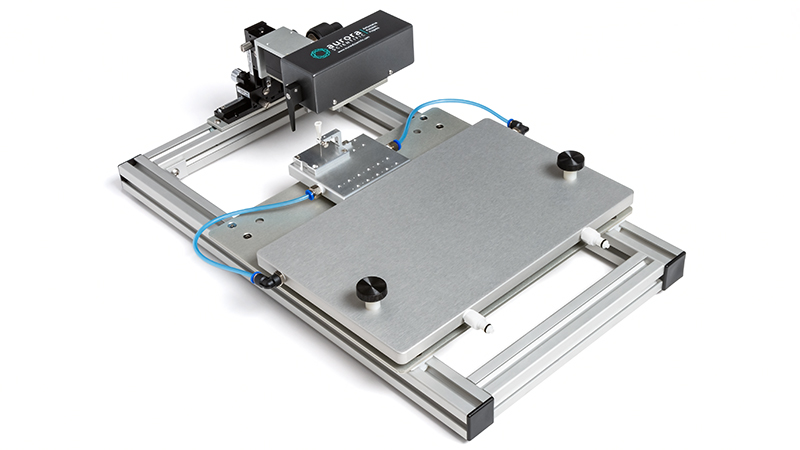
806D: in-situ Rat Apparatus
A beautifully designed, innovative apparatus for measuring in vitro, in situ and in vivo muscle properties in rats
Learn More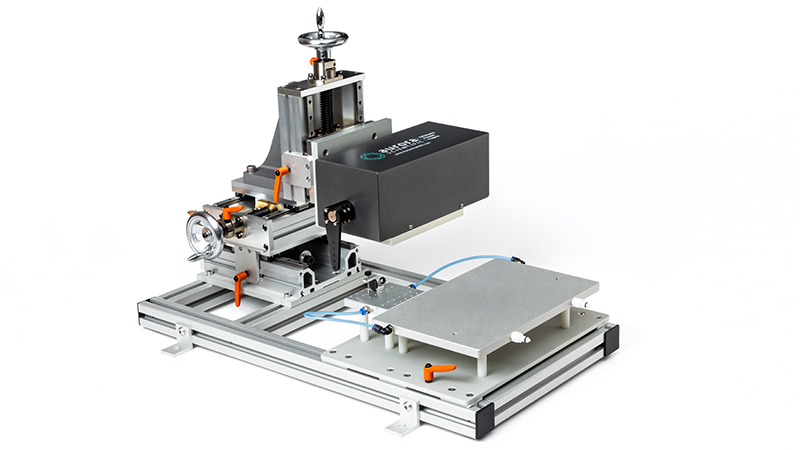
807B: in-situ Large Rodent/Small Animal Apparatus
Easily test in situ muscle tissue dynamics in large rodents, rabbits and other small animals
Learn More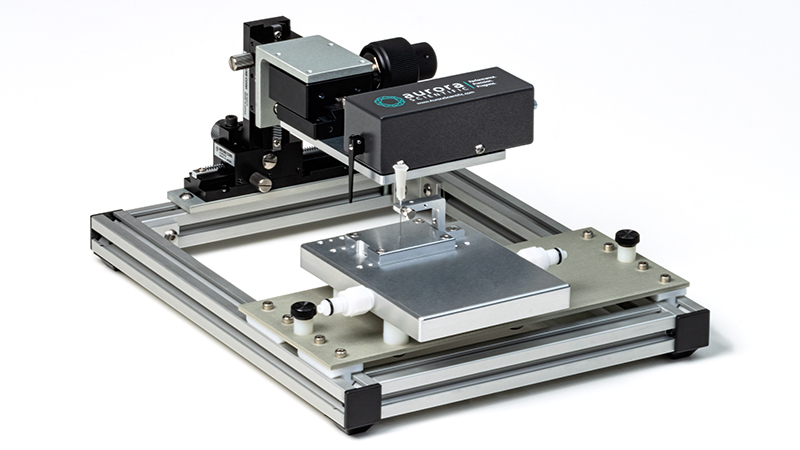
809C: in-situ Mouse Apparatus
A beautifully designed, flexible apparatus for easily measuring in vitro, in situ and in vivo muscle properties in mice
Learn More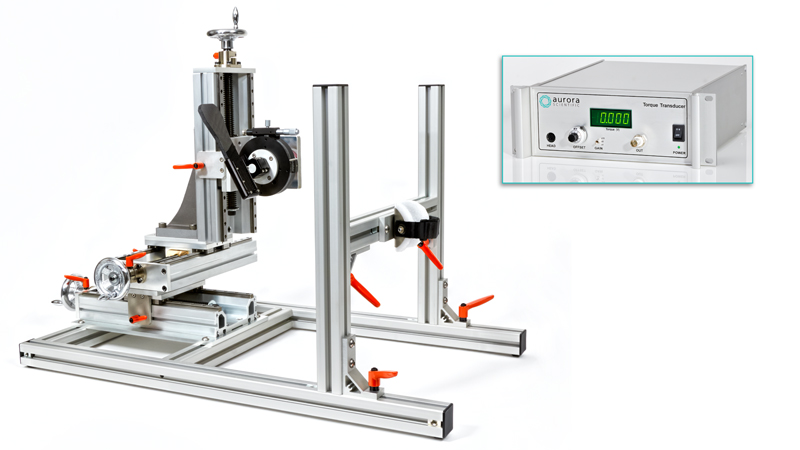
890A: in-situ Large Animal Apparatus
Easily test in situ muscle tissue dynamics in dogs, sheep, pigs and other large animals
Learn MoreSpecifications
| Software Specifications | 615A |
|---|---|
| Operating System | Windows XP/Vista/7/8/10 |
| Platform | LabVIEW |
| Included Software | 610A – Dynamic Muscle Control LabBook (DMC) 611A – Dynamic Muscle Analysis (DMA) 612A – Dynamic Muscle Analysis – High Throughput (DMA-HT) |
| 610A DMC LabBook Specifications | 615A |
|---|---|
| Data Channels Recorded | Length, Force, Stimulation Timing, Auxiliary 1-61 |
| Main Window | Controls: Change Study, Change Animal, Sample, Prepare Experiment, Run Experiment, Analyze Results, Edit Sample Parms, View, Prev, Next, Readout 1 Select, Readout 2 Select, Reset Timer Readouts: 1 and 22, Elapsed Time, Time since Last Test, Experiment Run Counter Dropdown menus: File, Setup and Help |
| Study Window | Used to define a study. Text Entry Fields: Name of Study, Description of Study, Animal Parameter definition and selection, Sample Parameter definition and selection, Muscles in Study definition and Selection, Experiments in Study definition and selection |
| Select Experiment Window | Select experiments to use in a study and create new experiments Existing Experiment list and selection button Create New Experiment: 6 wizards to create the following experiments: Twitch, Tetanus, Fatigue, Force-Frequency, Eccentric, Injury Custom Experiment button: opens protocol editor to allow creation of a custom experiment |
| Live Data Monitor | Real-time data output of chosen channels. Displays up to 30 minutes of data – zoom function, time base control, graph scales, freeze display |
| Prepare Experiment Window | Used to prepare the muscle for the test. Instant Stim control, Display of Twitch Force, Overlay of successive twitches, Calculation of Baseline Force and Max Force |
| Analysis3 | Load last data or saved data Display: Length, Force, Stimulation Plot Zoom Controls: Time Displayed and Offset sliders, Unzoom Calculated Values: Max Force, Time of Max Force, Min Force, Time of Min Force, Force at Time Zero, Max Length, Time of Max Length, Min Length, Time of Min Length, Length at Time Zero |
1 = Auxiliary Channels: can be configured to suit, common usages are: Temperature, pH, O2, etc.; 2 = Configured using Readout Select 1 and 2, normally displays Force In and Length In; 3 = Limited analysis available in 610A program, complete Analysis available in 611A and 612A programs
| 611A/612A DMA/DMA-HT Specifications | 615A |
|---|---|
| Main Window | Display: graph of test results with zoom function Plot Controls: Unfiltered/Filtered Force, Unfiltered/Filtered Length, Force Units, Length Units Buttons for: Invert Force Data, Open Data File, Filter Setup, Normalization, Muscle Analysis, Work Loop, Time Derivative, Line Fitting, Export Data Dropdown menus: File, High Throughput and Help |
| Analysis | Filter Setup: set cutoff frequency and order of Butterworth low-pass filter Normalization: set reference values for calculating L/Lref, F/Fref, Stress, Strain Muscle Analysis: provides statistics of displayed data Work Loop: calculates work loop data from sinusoidal tests Time Derivative: calculates velocity and dF/dt Line Fitting: fits linear or exponential functions to Force and Length data |
| High Throughput Analysis | Provides high speed analysis of a group of data files, data is output in tabular form and can be exported Analysis Types: Force-Frequency, Force-Time, Position-Time, Fatigue Calculated Values: Maximum, Minimum, Time to % Contraction, Time to % Relaxation, Integration, Max Rate of Contraction, Time to % of Max Rate of Contraction, Max Rate of Relaxation, Time to % of Max Rate of Relaxation, Starting Baseline, Ending Baseline, Average Rate of Contraction, Average Rate of Relaxation |
| Export Analysis | Exports analysis to: Excel, MATLAB, Maple, SAS, other software packages |
Explore Further
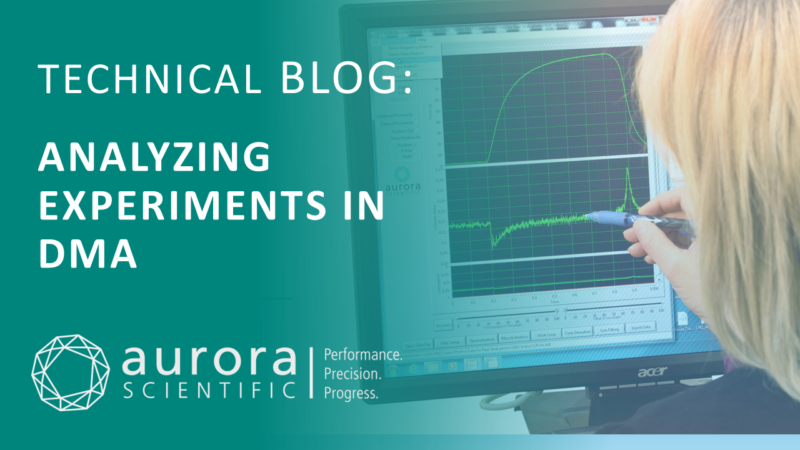
Step-by-Step: Analyzing Experiments in DMA
This blog will provide a walkthrough of how to analyze an experiment in our Dynamic Muscle Analysis (DMA) LabBook ...
Learn More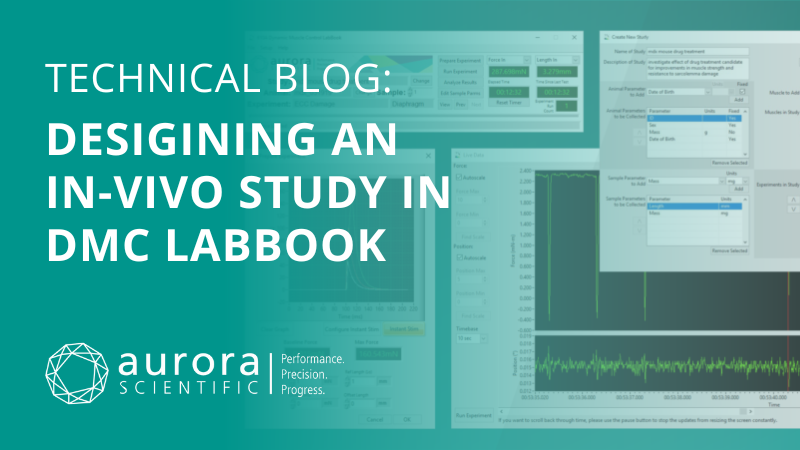
Designing an in-vivo study in DMC LabBook
This blog will provide a walkthrough of how to design a study in our Dynamic Muscle Control (DMC) LabBook software, specifically for 1300A 3-in-1 Whole Animal System in-vivo experiments.
Learn More
Organize and Streamline Data Collection with DMC LabBook
In this four-part Tech Cast Series, Matt Borkowski takes the viewer though the key new features and upgrades to the new 615A - DMC LabBook Software. Watch the series from start to finish, or choose ...
Learn More
Applications of In Vivo Functional Testing of the Rat Tibialis Anterior for Evaluating Tissue Engineered Skeletal Muscle Repair
We describe an in vivo protocol to measure dorsiflexion of the foot following stimulation of the peroneal nerve and contraction of the anterior crural compartment of the rat ...
Learn More
